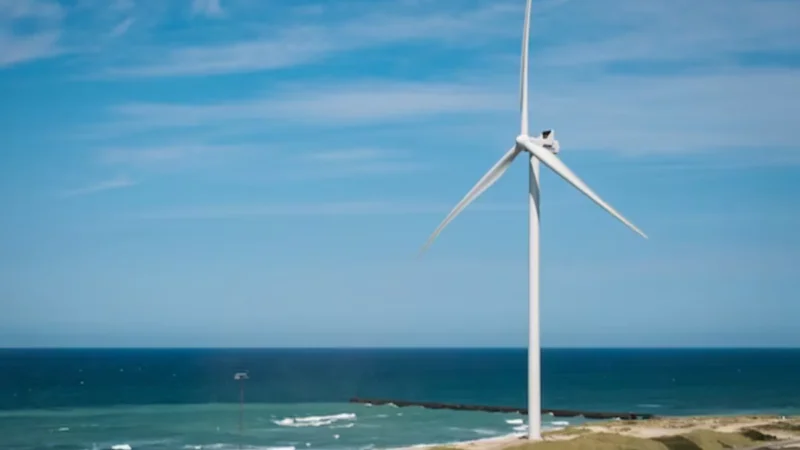Crisis in Central America: Massive Coral Bleaching Event Could Reshape Global Ecosystems

In recent times, an alarming and massive coral bleaching event has unfolded across Central America, raising concerns about its potential to reshape global ecosystems. This crisis stems from the adverse effects of rising ocean temperatures and climate change on delicate coral reef systems. The impact of this event goes beyond the local marine environment and has significant implications for the world’s biodiversity and ecological balance.
1.Causes of Coral Bleaching:
Coral bleaching occurs when coral polyps expel the symbiotic algae called zooxanthellae, which provide them with essential nutrients and vibrant colors. Elevated ocean temperatures and environmental stress disrupt this symbiotic relationship, causing the corals to lose their color and become susceptible to disease. Climate change, driven by the emission of greenhouse gases, is the primary driver of the warming ocean temperatures that trigger coral bleaching events.
2.Central America’s Coral Bleaching Crisis:
Central America, known for its diverse and stunning coral reefs, has been hit particularly hard by this coral bleaching crisis. The warm waters of the Pacific and Caribbean coasts have experienced prolonged periods of elevated temperatures, leaving coral reefs vulnerable to bleaching. Countries such as Belize, Honduras, and Panama, heavily reliant on reef-related tourism and fisheries, face immediate economic and social consequences.
3.Environmental Impact and Biodiversity Loss:
The severity of coral bleaching extends beyond the aesthetic loss of colorful reefs. Coral reefs are biodiversity hotspots, providing habitats for countless marine species. The bleaching event threatens the survival of various fish species, marine invertebrates, and other organisms that depend on the reef ecosystem. As these ecosystems degrade, it could lead to a domino effect, impacting the entire food chain and causing ripple effects through the global marine ecosystem.
4.Resilience and Future Prospects:
While the current situation is dire, there is hope that coral reefs possess a degree of resilience. Some corals may recover if ocean temperatures return to normal and stress factors diminish. Conservation efforts, such as marine protected areas and reducing local stressors, can enhance the recovery potential of coral reefs. Additionally, research into coral adaptation and assisted evolution is underway to develop more resilient coral species capable of withstanding changing environmental conditions.
5.Global Significance and Urgency:
The massive coral bleaching event in Central America is not an isolated incident. It serves as a stark reminder of the urgent need for global action to address climate change and its far-reaching consequences. The interconnectedness of ocean ecosystems means that the impacts of coral bleaching can reverberate across the world, affecting marine life, coastal communities, and economies on a global scale.
we can conclude this, The ongoing massive coral bleaching event in Central America is a critical environmental crisis with the potential to reshape global ecosystems. Its causes are deeply rooted in climate change, making it imperative for the international community to address this issue collectively. Efforts to mitigate climate change, reduce greenhouse gas emissions, and establish marine conservation measures are essential steps toward safeguarding coral reefs and the intricate web of life they support. The urgency to act underscores the need for a united global response to ensure the long-term health and resilience of our planet’s oceans and ecosystems.
FAQs
1. What is coral bleaching, and why is it happening in Central America?
Coral bleaching occurs when corals expel the algae living in their tissues, causing them to lose color and become more vulnerable to stress. In Central America, coral bleaching is happening due to rising ocean temperatures primarily caused by climate change. The warm waters disrupt the symbiotic relationship between corals and algae, leading to bleaching events.
2. How does coral bleaching impact the environment and biodiversity?
Coral reefs are vital marine ecosystems that support a wide range of marine life. When corals bleach and die, the entire reef ecosystem is affected. This leads to a decline in biodiversity as various fish species, marine invertebrates, and other organisms lose their habitats and sources of food. The loss of these habitats can have cascading effects throughout the food chain and marine ecosystem.
3. What are the potential global implications of the massive coral bleaching event in Central America?
The massive coral bleaching event in Central America has global implications because coral reefs are interconnected ecosystems. The decline of coral reefs in one region can impact marine life, ocean currents, and even weather patterns in distant parts of the world. Additionally, the loss of coral reefs can disrupt fisheries, coastal protection, and tourism, affecting economies and communities worldwide.
4. What can be done to address the coral bleaching crisis and protect coral reefs?
Addressing the coral bleaching crisis requires both local and global efforts. Locally, implementing marine protected areas, reducing pollution and overfishing, and promoting sustainable tourism can help enhance reef resilience. Globally, tackling climate change by reducing greenhouse gas emissions is crucial to prevent further warming of the oceans. Research into coral adaptation and conservation initiatives also play a vital role in protecting and restoring coral reefs.
5. Is there hope for the recovery of coral reefs, and how can individuals contribute?
Yes, there is hope for the recovery of coral reefs. While some corals may recover on their own if conditions improve, active conservation efforts are essential. Individuals can contribute by raising awareness about climate change and its impact on coral reefs, supporting organizations and initiatives focused on reef protection and restoration, and adopting eco-friendly practices in their daily lives to reduce carbon emissions and minimize local stressors on reefs. Every small action can contribute to the larger effort of preserving these vital marine ecosystems.


